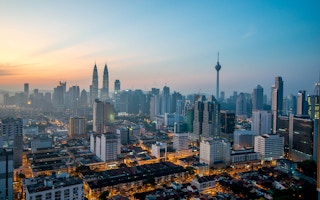Great cities are not always practical or efficient; they can be romantic, grandiose, multi-layered and poetic places. However, in the light of climate change, population growth, resource depletion and political insecurity, they must also increasingly become resource-efficient and resilient spaces if they are to have a future in our rapidly changing world.
To continue reading, subscribe to Eco‑Business.
There's something for everyone. We offer a range of subscription plans.
- Access our stories and receive our Insights Weekly newsletter with the free EB Member plan.
- Unlock unlimited access to our content and archive with EB Circle.
- Publish your content with EB Premium.
Cities can be compared to a greedy living organism. They require constant sustenance in the form of resources such as water or energy, and produce waste which needs to be carefully managed if it is not to cause health and environmental issues. The way that we conceive, plan and manage our cities does not always recognise the interconnections between different systems.
For example, traditional methods of producing our food require considerable amounts of both water and energy which may not be used for other purposes, resulting in water and power shortages and producing waste and pollution. As the global population exceeds 7 billion, an increasing number of cities around the world are looking for new ways of thinking and solutions to solve the growing challenges of food supply, water and energy management.
The visible structure of any city is laid out by its pattern of streets, boulevards, parklands and building blocks, and its network of public spaces, waterfronts, gardens, squares, and infrastructural systems. But much of the infrastructure remains invisible (both actually and metaphorically), underground and out-of-date.
Our increasing demand for food, water and energy often exceed the capabilities of any one city, region or government. A collaborative approach is required to meet these demands and develop better integrated approaches to food, water and energy management.
Building better cities
A ‘nexus’ is a focal point that bundles a series of connections and links, such as a system of urban infrastructure. Cities have often been called ‘systems of systems’ and we are starting to have a better understanding of the ways in which the sectors within a city are interdependent and interconnected.
This is called urban nexus thinking and we believe that using this will help cities to better understand the interrelated and complex systems where energy, water, food and waste systems intersect.
Our CRUNCH (Climate Resilient Urban Nexus CHoices) project takes food, water and energy as one complex system, leading to increased knowledge and discoveries that cannot, we argue, emerge when these areas are investigated separately in ‘silos’.
The CRUNCH project will help cities to solve the increasing challenges of food, water and energy management by using an integrated approach to facilitate decision-making, and by learning from city to city. The project will identify and leverage untapped resource potential revealed through the inter-dependencies between food, water and energy, resulting in the potential for increased resource-efficiency.
CRUNCH’s potential nexus solutions include urban food production with renewable energy systems through biomass (anaerobic digestion using organic waste); holding, cleaning and draining water naturally through an integrative and systemic ecological approach combined with sustainable storage solutions and urban drainage (reducing flood risk).
After looking at case studies in six very different participating cities—Southend-on-Sea, Miami, Taipei, Eindhoven, Gdansk and Uppsala—the innovative and practical element of our project will be the development of a new Integrated Decision Support System (IDSS) and visualisation models (refer to diagram) which will help planners make more informed decisions for the sustainable future of cities.
It uses expert and lay knowledge in waste, food, water and energy management and urban planning, mobility, architecture and governance, which we believe will increase resource efficiency by over 10 per cent. In real-life terms, this means for the residents of these cities that there is less waste generation, better air quality and lower CO2-emissions resulting in an enhanced quality of life for all.
“
As the global population exceeds 7 billion, an increasing number of cities around the world are looking for new ways of thinking and solutions to solve the growing challenges of food supply, water and energy management.
After accounting for trade-offs, the synergies and benefits would widely outweigh the effort to reconfigure, renew or retrofit the existing infrastructural systems. Taking a nexus approach and basing decisions on the IDSS will, initial research indicates, result in considerable potential savings which can be invested in social and health programmes which will make cities healthier and happier spaces to live and work.
There are numerous reasons to increase the resource efficiency of cities and to reduce the environmental impact on natural resources in a world with growing populations and consumption. One reason is resource productivity, which also improves the competitiveness of cities, as higher resource efficiency is likely to deliver environmental, economic and resource benefits.
As indicated, it may also result in considerable positive social and health outcomes. We suggest that if we can scale up this way of thinking and our approach for city planning it could lead to a new ways to meet the resource challenges of the future. It also presents a way to practically operationalise sustainable development by helping to decouple resource use from economic growth.
Rethinking infrastructural systems will be one of the major urban challenges for the coming decades. The urban nexus is still an emerging concept requiring more testing in cities, which our project will do.
Dr Steffen Lehmann is Professor for Sustainable Architecture at the University of Portsmouth, where he is Director of the Cluster for Sustainable Cities. This article was written for Eco-Business.


















